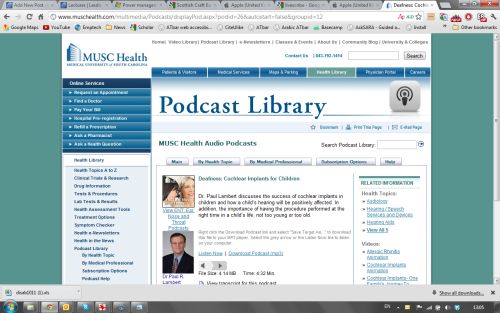“I also use my glasses in lecturers so that I can lip read, but if the lecturer turns away from me I might as well give up! It bugs me not to be able to see clearly but it makes me even crosser when they forget that I depend on seeing their face not the back of their head! It was a much bigger issue with the larger groups up in York and ISVR has smaller groups so I can cope. But it would help if lecturers could remember to face the audience rather than talk to the board”
“If I can’t hear I just leave it, but it might be quite a good idea [to put audio versions of lectures on Blackboard]. If there’s something that you’re a bit confused about, you can go back and listen to it again in your own time.”
Sarah – ISVR
There are some examples of podcasts about different audiology topics which have been provided by the Medical University of South Carolina. They are all well laid out and have transcriptions.






